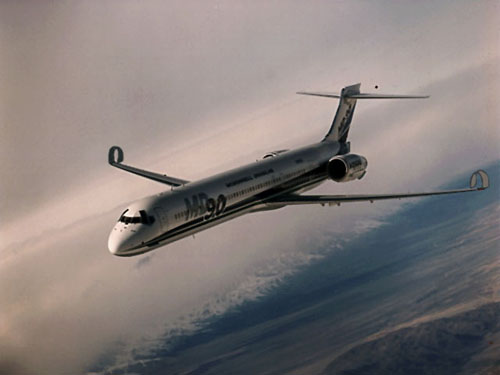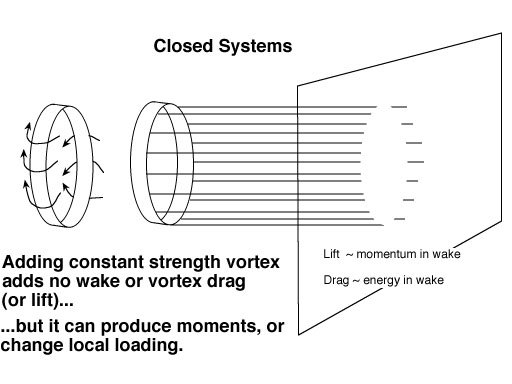

The Lockheed box-plane, shown below, achieves even greater drag reduction at a given span and height than the circular ring wing (in fact the theoretical minimum vortex drag) in a configuration with reasonable high-speed performance (note the desirable transonic area-ruling) and some structural advantages. Fuel volume, landing gear integration, CLmax penalties, and lower section Reynolds numbers are some of the disadvantages for this concept.

Early attempts at ring-wing design were just as ambitious and successful. The figure below is the Bleriot III.

The recently-patented "spiroid wing tip" produces a reduction in induced drag, much like that of a winglet. However, its closed planform shape may make it possible to reduce local lift coefficients—often a problem for winglets.

Although a closed lifting system may eliminate the wing tips, it does not eliminate the trailing vortex wake. In fact, the lift produced by the system can be directly related to the velocities in the wake that lead to induced drag. These systems are still interesting because one may add a constant circulation vortex ring to the system without changing the wake. Such a constant strength vortex distribution does not add any lift, but it may be used to produce moments without induced drag penalties or to manipulate section lift coefficients in a desirable way.
